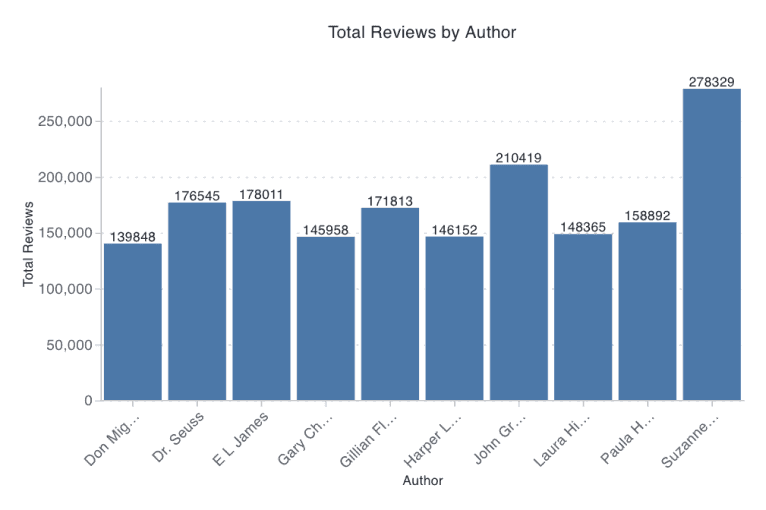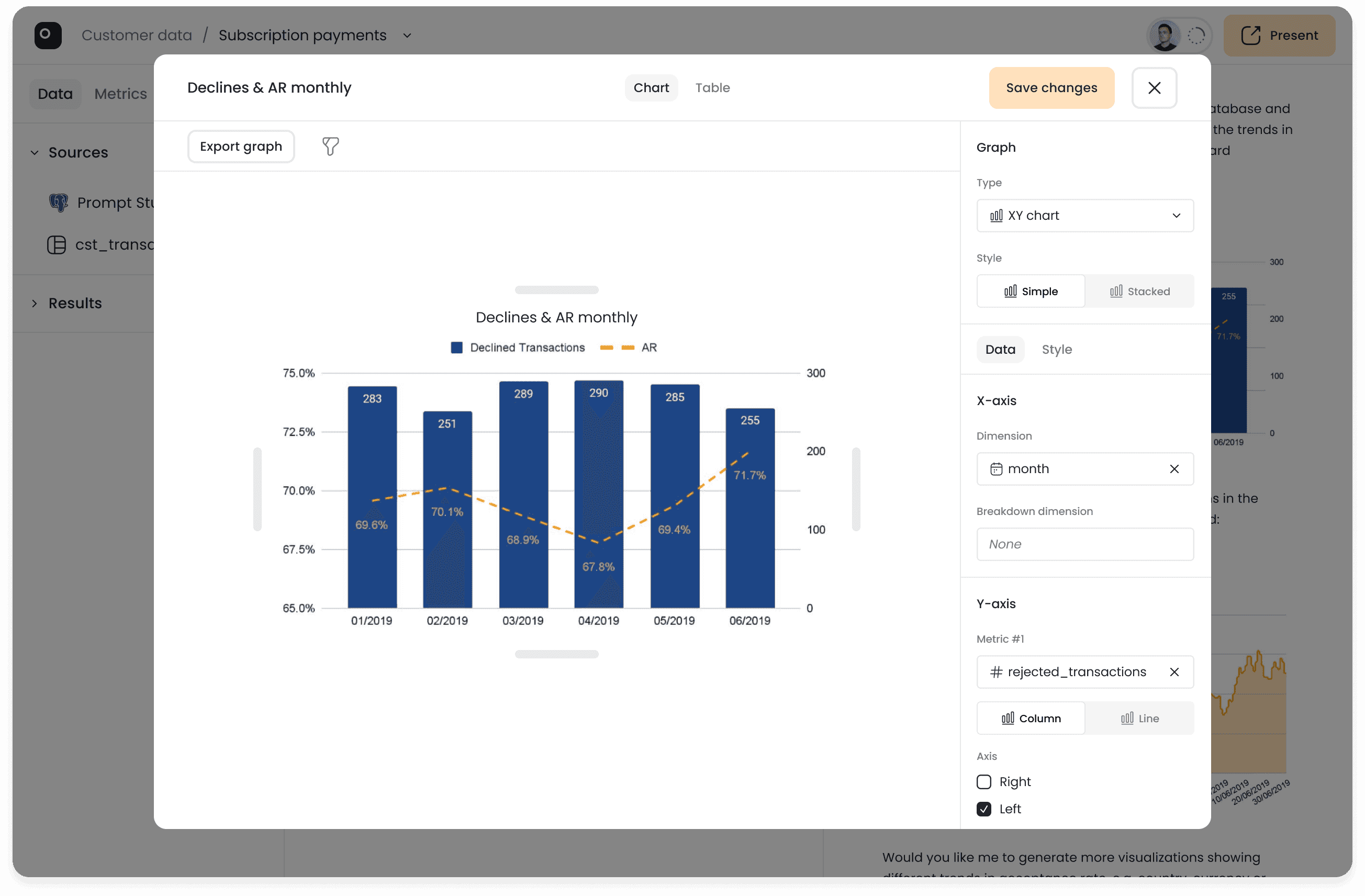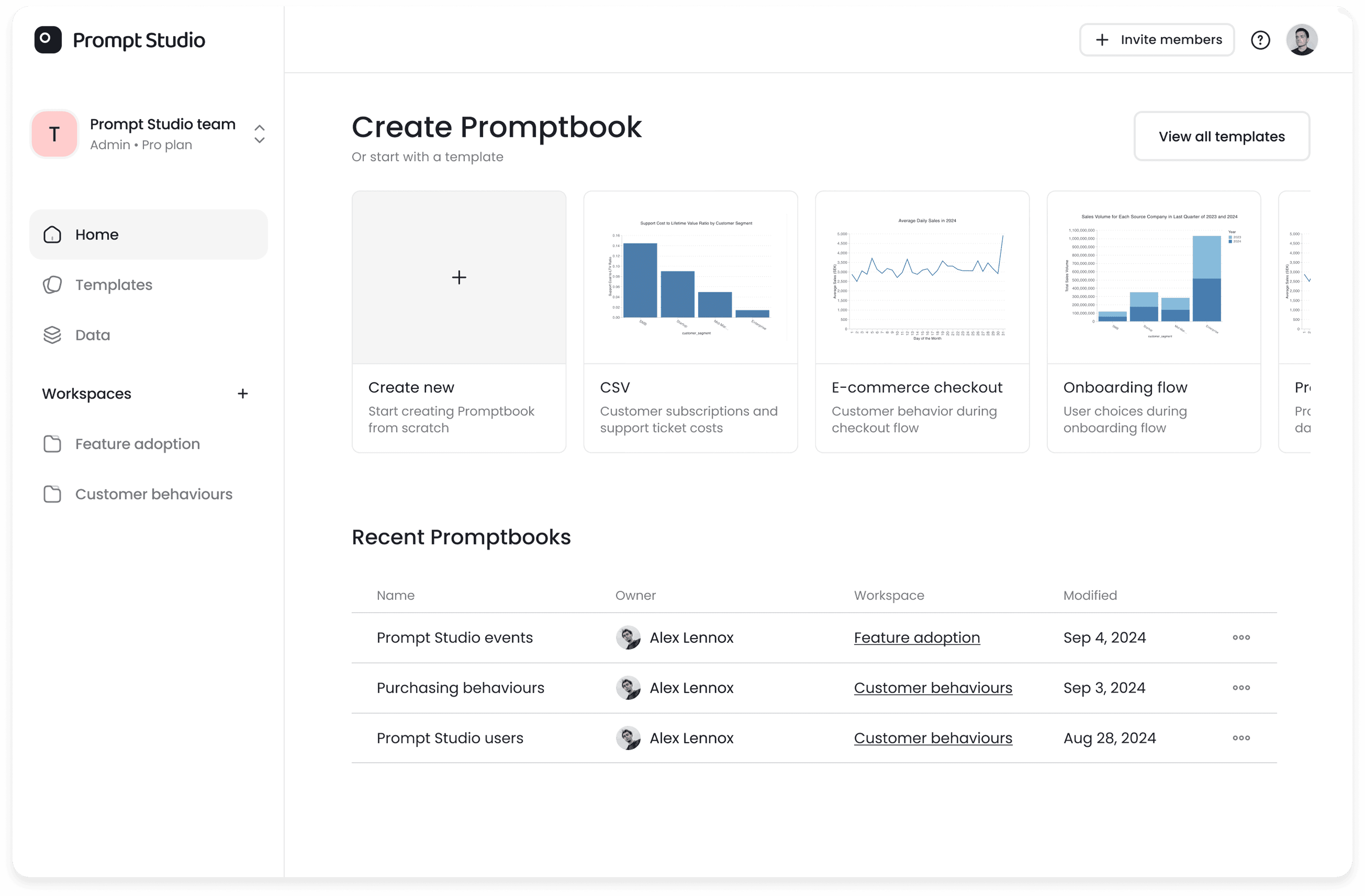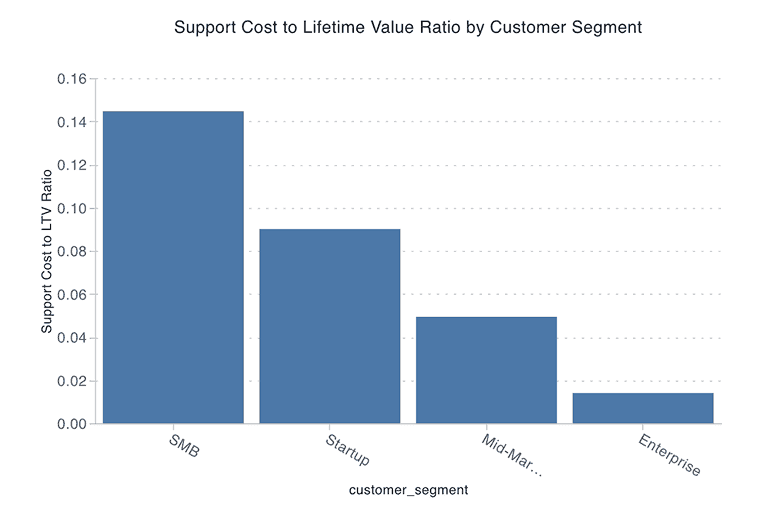Prompt Studio
Your fastest path to meaningful insights
Empower your team with self-service analytics, go from raw data to impactful decisions - all within a collaborative AI-powered workspace.

Simply type a question to explore your data, get insights and generate visualizations in seconds, not hours.
Answer complex ad-hoc questions
in minutes
Talk to your data
AI acts as a bridge between your data and product teams, making it easy for everyone to access and work with data
Full transparency
Stay in control and audit every step the AI takes to fulfill your requests
Safety first
We prioritize the security of your data. With the enterprise version of Prompt Studio, all your information stays securely in your cloud
Insights that matter
Move beyond rigid and predefined dashboards and quickly answer most complex or ad hoc data questions
Seamless collaboration
Work together in Promptbooks, create teams, manage permissions, and share presentation-ready insights with external collaborators
No code required
Your entire team can generate insights and visualizations from the data without writing a single line of code
Use Cases
Self-service analytics
in your organization

Sales
Superstore Sales Dataset
Sales data including information on products, orders and customers.

Sales
50 Bestselling Books
Amazon top 50 selling books for each year between 2009 and 2019.





